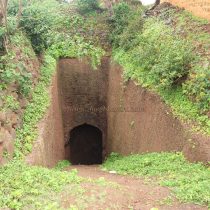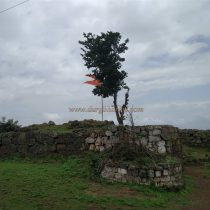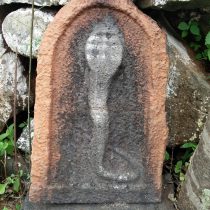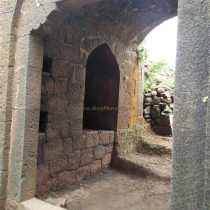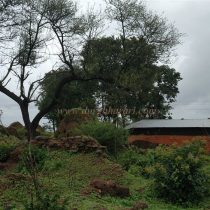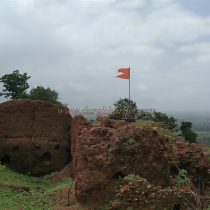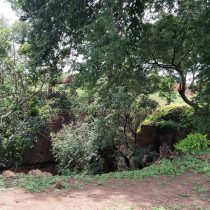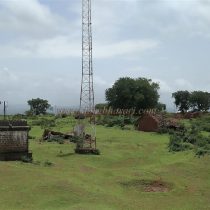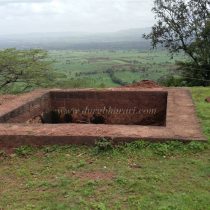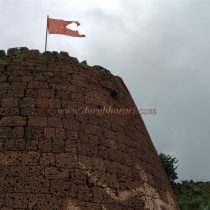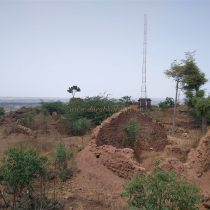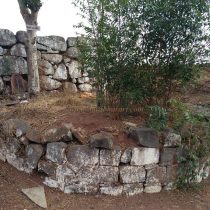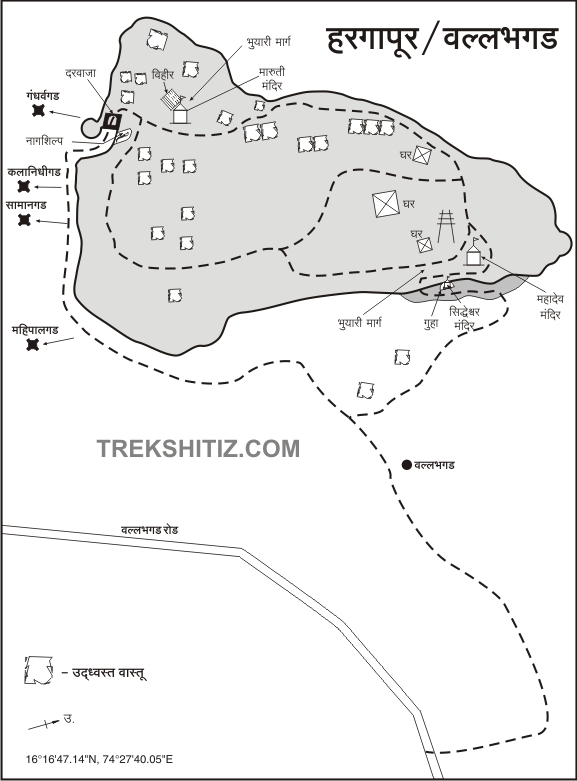VALLABHGAD
TYPE : HILL FORT
DISTRICT : BELGAON
HEIGHT : 2625 FEET
GRADE : EASY
Belgaon and Maharashtra have an inseparable relationship. This province, which was in the Swarajya, was annexed to the state of Karnataka during the linguistic transformation. Most of the forts in Belgaon district are of a ground fort or fortress type and there are very few tall forts except one. The forts that can be called a hill fort are on a small hill or a hummock. Vallabhgad is a fort located on a small hill west of Hukkeri taluka and northwest of Sankeshwar city. On the Kolhapur-Belgaon highway, 3 km from Sankeshwar, there is a fork called Vallabhgad. Vallabhgad fort can be seen from this fork. Turning left from the highway, we reach Vallabhgad village directly. The distance from the base of the fort to the fort is 1 km. The fort is located at an altitude of about 1850 feet above sea level.
...
. The total area of the fort is 5 acres, the length is 1200 feet and the width is 300 feet. As the fort is not very high, you can reach the fort in fifteen minutes from Vallabhgad village. Adjacent to the bastion of the fort is the ancient temple of Gavdevi Margubai. There is a deepmal in front of the temple. You can reach this temple directly by private vehicle. After walking along the footpath behind the temple, we reach the entrance of the fort. The arch and door of the main entrance of the fort are in good condition. The entrance is small and in curve construction. Inside the entrance is a large Hanuman temple and on the east bank of the fort is a temple of Lord Shiva. Beneath this temple is a large cave in which Siddheshwar Swami's Paduka is placed. To reach this cave, one has to go down the ramparts of the fort. There is a small basement in this cave. In the center of the fort is a square-shaped well which is forty feet deep, and another deep well carved in the rock. There is an underground passage behind the Hanuman temple to descend into this well. After descending twenty-five steps, you come across an arch. This stairway is extremely grand. Going further down this step leads to a larger well. The water from this well was used for drinking by the people living in the fort in the past. Most of the ramparts of the fort have been demolished. To the north of the fort is a separate bastion inside the ramparts. As you walk around the curtain wall, you see two toilets in the ramparts. Apart from this, one can see a newly constructed water cistern carved into the rock. As the fort is small in size, one hour is enough to complete the fort round. The Durgaveer Sanstha of Mumbai has undertaken the work of conservation of the fort with the participation of the locals and has given a new look to the fort without affecting the original splendor of the fort. The work done here by the locals of this organization is commendable. Vallabhgad is one of the ancient forts. Like other forts in the Kolhapur district, the credit for the construction of Vallabhgad goes to Shilahar Raja Bhoj II. In the year 1667, Shivaji Maharaj conquered this fort. Although the fort keeper of the fort is not mentioned, there were 75 soldiers on this fort and their descendants are still living in Vallabhgad village. In the year 1688, Vallabhgad was conquered by the Mughals. In the year 1701, this fort came back to the Marathas. After this, the ruler of this fort was Karveerkar Chhatrapati. On 14th May 1753, Karveerkar Chhatrapati Sambhaji Raja gave the forts of Vallabhgad, Bhimgad, Pargad, and Kalanidhigad to Sadashivrao Bhau Peshwa. The fort later went into the control of Vatmunrikar Desai. Later, during the Maratha rule, when it came to Satarkar, in the year 1776, Satarkar Shahu Maharaj rebuilt this fort. After this, it again came under the control of Kolhapurkar. After that, it came under the control of Patwardhan and returned to Kolhapurkar in 1796. When some talukas of Kolhapur came under British rule, Vallabhgad also came under their rule in 1844.
© Suresh Nimbalkar


